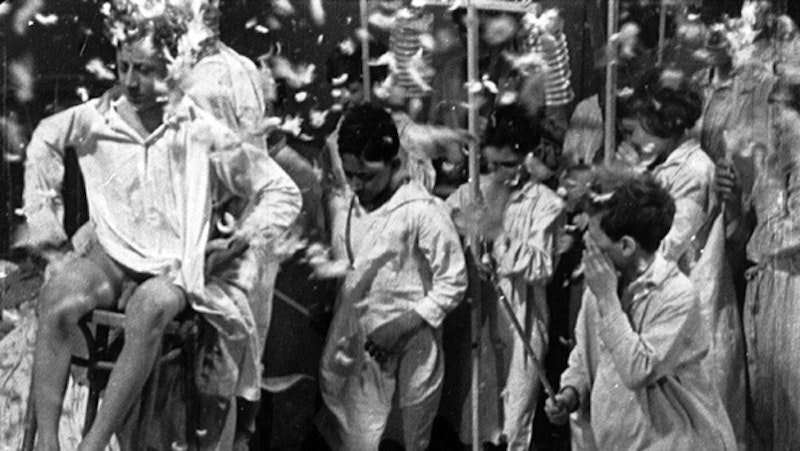The streaming landscape used to be different. Netflix was never the digital Library of Alexandria was for DVDs, although it was once more of a hub. Not even a decade ago individual studios had yet to Balkanize their properties to their own proprietary sites, Fandor was the only place to go for indie and festival affairs, and the Criterion Collection was hosted on Hulu. There wasn’t much form to it, just piles of catalogs loosely sewn together by threadbare algorithms that were still hemmed by human hands. Mubi was the notable standout back then, not just offering access, but limiting it. They used to launch a movie every day and only keep it up for 29 more. Thirty films, 30 days. They were the most interestingly curated, grabbing new alternative titles, practically undistributed international features, and pulling material up from the depths of cinematic memory. Their time crunch incentivized watching them too, instead of letting them just rot in a queue.
It was in this context I remember trying to write a paper for my 200 level film history class on Slow (or “Contemplative”) Cinema, trying to break myself again out of whatever cinematic comfort zone I’d wound up in. I wanted to push myself, find the extremities of the medium, especially from the contemporary and emerging digital world. I’d spent some time trying to track down the works of Lav Diaz, but beyond his latest (at the time) Norte, the End of History (2014) being on Netflix, his more aggressively experimental, slow, and outright long movies (Norte was short by his standards, clocking in at just over four hours) were pretty much impossible to find. It seemed like my last avenue was to try to reach out to my professor’s grad school roommate who wrote a dissertation on Slow Cinema, when out of the blue Mubi ran a retrospective on the recent master. All of a sudden, I could watch his previously impossible to see films, so long as I had a whole workday’s worth of hours free for one.
I immediately got to work on Evolution of a Filipino Family (2005), a transitional work in his oeuvre—both in material and form. Diaz spent nearly a decade making Evolution, first by shooting it on 16mm, then finishing the bulk of the 10-hour opus on digital, which revolutionized Diaz’s workflow and aesthetic possibilities. The transfer Mubi had back then showed plenty of evidence of this, with occasionally artifacting cutting in, whether black pixelated squares checkering the frame or the squeaky magnetic clicks of DV tape rupturing the soundtrack. It heightened the archeological quality of the film, from its period setting during the fascist Marcos regime to the quality of finding and watching a film that seemed like it was lost in the ether.
“... alam ko kung paano namatay si Jean Vigo.” (“I know how Jean Vigo died.”)—Taga Timog, filmmaker, reads the title card when the film cuts to black after over 600 minutes of relentless running. Taga Timog, the director character that acts as a stand-in for Diaz in the movie, translates from Filipino as “from the South” which—as Adam Katzman pointed out—references both Diaz being born in Mindanao (the southernmost region of the Philippines) and his bottom-up approach to cinema. The Jean Vigo part is, at first, more illusive.
Vigo, that anarchist son of an anarchist, made one feature-length film before he died at 29 of tuberculosis. That film, L’Atalante (1934), along with his 47-minute Zéro de conduite (1933) are considered some of the finest films to emerge from interwar France, with some saying they’re a couple of the greatest films ever made. They’re the kinds of films everyone encounters when they first dive into cinema: we hear about “cool” movies like Pulp Fiction (1994) and Quentin Tarantino mentions French New Wave in an interview, and then you’re tracking down the film that inspired Truffaut to make The 400 Blows (1959).
I can’t say I appreciated the impact of Vigo’s films when I first saw them at 16 or 17, but images do come back to me time and time again—people dancing in Nice, framed as if they’re a part of the sky; feathers filling a dormitory after the school children have staged a revolution; a sailor running his hand over a record and music coming over the soundtrack. Vigo’s films, the few there are, were exuberant dreams of freedom, full of free-flowing form that feels far away from the hapless world Vigo was born into. In Vigo’s cinema is a liberation he fought and died for as the producers tried to cut his L’Atalante, and Vigo battled to preserve his vision while rotting away with consumption. It’s no different than his father dying in prison for anti-war beliefs, or the revolutionaries who’ve died in the jungle during the over half-century that the guerrillas have been trying to liberate the Philippines from a fascist and imperialist yoke.
Sometimes it seems like Jean Vigo’s cinema is the only cinema that mattered. For Diaz he seems to be a martyr of cinema—his ideals were the aesthetic promise of liberation, while also being destroyed by the material realities of the world. For me it was full circle: I’d spent so long trying to find the ends of cinema, its furthest reaches, and wound right back to where I started with canonical French works. I’d circumnavigated the globe of film, and found its revolution everywhere.

